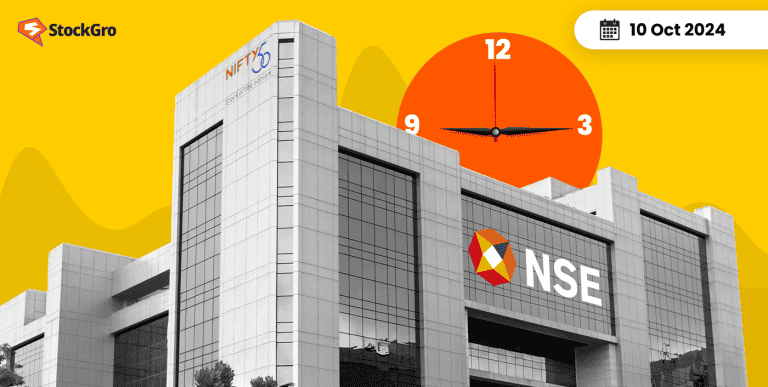
Often praised as the golden rule in the world of investment is diversification. This approach helps investors distribute their risk so that one underperforming investment does not appreciably affect their whole portfolio. Investing across several asset classes—each with special risk and return qualities—is one of the basic approaches to reaching diversification.
However, what are asset classes, and why are they so crucial for a well-balanced investment portfolio? Asset classes are groups of financial assets with comparable market behaviour. Among these are cash equivalents, fixed income (bonds), and stocks—equities.
Since every asset class reacts differently to economic circumstances, they are absolutely vital in determining an investor’s plan. Maximising returns and controlling risk depend on an awareness of these processes and asset management.
This is where asset allocation—the process of distributing your investments among several asset classes to reach a particular financial goal—helps balance risk and return. A disciplined asset allocation plan considers your risk tolerance, time horizon, and investing goals.
The several sorts of asset classes—traditional and alternative—their importance in investment strategies, and how they contribute to creating a diversified portfolio will be discussed in this article.
What are asset classes?
An asset class is a collection of financial products with comparable traits and market behaviour. Each of these broad investment categories has a risk profile, return potential, and function in a portfolio. Asset classes serve mostly to enable investors to reach their financial objectives by helping them distribute their wealth in a way that balances risk and return.
The fundamentals of an investing portfolio are asset classifications. They offer a framework that enables investors to allocate their capital across several assets, thus diversifying their investments.
The way assets perform in different market conditions determines their classification into several groups; it is not a matter of taste. Assets of the same class often react to market forces including interest rates, inflation, and economic development in the same ways. For example, whereas bonds are thought to be more stable but with less returns over the long run, equities—stocks—are usually more erratic.
The key characteristics that define an asset class include:
- Risk level: Usually, assets of the same class show similar degrees of risk.
- Expected returns: The potential for profit is aligned across assets within a class.
- Liquidity: The simplicity of acquiring or selling assets without influencing their market value.
- Correlation: How assets react to the state of the market, usually in concert with one another.
Traditional asset classes
Equities (Stocks)
Stocks, or equities, reflect firm ownership. By purchasing a portion of the company’s stock, you are granted access to a portion of its assets and earnings. Among the most often used and well-known asset kinds, particularly for those looking for long-term gain, are stocks. Usually reflecting a company’s expansion and success, stocks provide a great chance for large wealth appreciation.
Benefits:
- Capital appreciation: Equities are well-known for their ability to yield outstanding long-term returns since the value of a company’s shares rises with its development. For the Nifty 50 index, for instance, the average annual return over the past 10 years has been about 14.16% (as of July 2024).
- Dividends: Some companies compensate their owners for a small portion of their income to provide them with even more money.
Risks:
- Market volatility: Factors like economic circumstances, interest rates, or even geopolitical developments can create significant changes in stock prices. Short-term losses may result from this volatility.
- Business performance risks: The performance of the underlying company determines rather much the success of a given stock. Should a company underperform or experience difficulties, the value of its stocks could drop.
Fixed income (Bonds)
Bonds are debt instruments issued by corporations or governments intended for capital financing. Investing in a bond is essentially lending money to the issuer in return for regular interest payments and principal amount payback at maturity.
Benefits:
- Stability: Usually less volatile than stocks, bonds are a suitable choice for those trying to lower risk and protect capital.
- Regular income: Popular among income-seeking investors, bonds offer consistent, fixed-interest payments. For retirees or cautious investors specifically, this consistent income can be quite helpful. In India, in 2024 the average yield on 10-year government bonds was almost 6.8%.
Risks:
- Interest rate fluctuations: Bond values run inversely with interest rates. Since fresh bonds give better returns, the value of current bonds usually declines when interest rates rise.
- Credit risk: Should the issuer of a bond fail on its payments, the investor can lose either half or all of their money. Though corporate bonds entail more credit risk, government bonds are usually safer.
Cash & cash equivalents
Cash and cash equivalents include mostly highly liquid assets including money market instruments, certificates of deposit (CDs), and savings accounts. Since these short-term investments give fast access to money, every conservative portfolio is primarily composed of them.
Benefits:
- High liquidity: Ideal for meeting temporary costs or as an emergency fund, cash equivalents are fast convertible into cash. For example, savings accounts in India offer immediate liquidity.
- Low risk: These are usually seen as safe since government securities or financial institutions support them. For instance, the interest rates on savings accounts in India typically range from 2.70% to 3% per annum, and they are insured up to ₹5 lakh by the Deposit Insurance and Credit Guarantee Corporation (DICGC).
Risks:
- Low returns: The lowest return of cash and cash equivalents among other asset types is its main drawback. Although they offer security, the profits could not be enough to reach long-term financial objectives.
- Inflation risk: Cash equivalents could not be able to keep up with inflation, which would over time reduce buying power. Investors running too much of their portfolio in cash run a real-term loss in value.
Alternate asset classes
Real estate
Real estate is property, both residential (houses, apartments) and commercial (office buildings, shopping centres). Real estate is a popular alternative asset class because it is a tangible asset that has historically shown potential for appreciation over time. When property values rise, investors can get profits either from rental income or capital appreciation.
Real estate investments can also be accessed through Real Estate Investment Trusts (REITs), which allow investors to pool their money to invest in income-generating properties like office buildings, malls, or hotels. In August 2024, over ₹1,400 crore was distributed to over 2,40,000 unit holders by four publicly listed Real Estate Investment Trusts (REITs) in India.
Benefits:
- Tangible asset: One advantage of real estate is having a tangible, naturally valuable asset.
- Rental income: Renting out their houses allows investors to create steady revenue.
- Potential appreciation: Potential appreciation of property values over time would result in capital gains upon sale. For instance, data from the National Housing Bank reveals that, on average, residential property prices in India have risen by 10–12% yearly, outpacing inflation and income growth for the past ten years.
Risks:
- Illiquidity: Accessing your money in an emergency can be difficult since real estate is not as quickly sold or convertible into cash as other assets.
- Market dependency: Depending on the state of the market—that of economic downturns or changes in demand—property values and rental incomes will vary.
Commodities
Commodities are items including gold, silver, oil, and agricultural products. Since their rates usually grow with inflation, these assets are regularly used as a hedge against it. As their prices often do not move with the rates of stocks and bonds, commodities offer portfolio diversification.
Benefits:
- Hedge against inflation: Commodities—especially precious metals like gold—often keep or increase their value under inflation, therefore protecting investor buying power.
- Diversification: Commodities are a useful way to vary risk in a portfolio since they have little bearing on traditional asset classes like bonds and stocks.
Risks:
- Price volatility: Dramatic price swings in commodities can be brought about by geopolitical events, climate trends, and mismatched supply-demand. For instance, Indian crude oil prices varied greatly, ranging from $74 per barrel in September 2024, to perhaps $83-84 per barrel in March.
- Supply-demand factors: The value of commodities is heavily influenced by outside events including production levels, natural disasters, and world market movements; hence, they are erratic.
Private equity
Investing in privately held businesses under private equity usually by direct ownership or by means of financing for expansion. Private equity is not sold on stock markets, unlike public equity or stocks. Particularly through investments in startups or distressed businesses, this asset class is well-known for its possible high returns.
Benefits:
- High potential returns: Particularly if the business expands greatly or is sold at a higher valuation, private equity investments can yield large gains.
- Control over investment: Private equity investors have a say in how the company is operated, thereby offering a chance to affect results and decisions.
Risks:
- Illiquidity: Usually long-term and difficult to sell before the investment matures, private equity investments are less liquid than public shares.
- High risk: Private businesses run more of a risk of failing or underperforming since they are not under the same regulatory monitoring as public ones. For instance, research indicates that only 20% of startups are capable of enduring for more than five years, and only 8% are able to endure for more than ten years.
Hedge funds
Often through speculative investments, hedge funds are alternative investments with a broad range of tactics to produce large returns. Apart from other industries, hedge funds could invest in currencies, derivatives, commodities, equities, and bonds. Usually, they are only approachable to institutional investors or persons with significant net worth.
Benefits:
- Potential for high returns: Hedge fund aggressive investment strategies are well-known, and should they be successful, can lead to significant returns.
- Diverse strategies: Hedge funds mix short selling and leverage with other approaches to profit on both growing and sinking markets.
Risks:
- High fees: Usually billing high management and performance fees, hedge funds could reduce returns.
- Speculative nature: Since they rely on complex financial instruments and involve substantial risk, many hedge fund strategies are quite speculative.
Cryptocurrencies
Emerging as a fresh alternative asset class are cryptocurrencies including Ethereum and Bitcoin. Operating on blockchain technology, these digital currencies are distributed rather widely. Driven by their spectacular rise and acceptance in digital finance, cryptocurrencies have become well-known for their possible big gains.
Benefits:
- High growth potential: With their spectacular value rises, cryptocurrencies offer investors great profit opportunities. For instance, in March 2024 the value of Bitcoin’s value hit $73,000.
- Digital innovation: Attractive to progressive investors, cryptocurrencies represent the direction digital payments and distributed finance will go.
Risks:
- Extreme volatility: Prices of cryptocurrencies are quite erratic, with regular, significant swings in value over brief times.
- Regulatory risks: Changing rules apply to cryptocurrencies, and governments all around are still figuring out how to tax and control these assets, which would influence their legitimacy and value.
For those wishing to diversify outside conventional stocks and bonds, these other asset classes offer a spectrum of possibilities. However, they also carry some risks that need careful consideration before including them in a portfolio.
The role of asset classes in portfolio diversification
A great investing plan depends on diversification. You reduce the danger of any one asset’s bad performance compromising your whole portfolio by diversifying your assets among stocks, bonds, real estate, and commodities. Because profits in some investments can offset losses in others, this strategy helps attain more steady returns.
Diversification depends on an awareness of linkage. Correlation reveals the movement with respect to each other of assets. Low to negative correlation assets respond differently to changes in the market.
Example – Bonds might remain constant or rise, for instance, while stocks fall. Acting as a buffer against losses in other assets, gold usually performs well in recessionary times. Mixing assets that respond differently to the same circumstances helps you to protect your portfolio from significant fluctuations.
Building a balanced portfolio means deliberately selecting a combination of asset types that fit your risk tolerance and financial objectives.
Example – An investor might set aside 50% to equities for growth, 30% to bonds for stability, and 20% to real estate or commodities for additional diversification for moderate growth. Targeting consistent, long-term returns while reducing risk, this mix helps prevent depending too much on one asset class.
Aiming for a better investment experience and a higher probability of attaining their financial goals, investors can better manage market changes by diversifying among many asset types.
You may also like: Diversification: Why it is important for your portfolio
Asset allocation strategies
Based on your financial objectives, risk tolerance, and investment horizon, asset allocation—that is, the distribution of investments among several asset classes—stocks, bonds, real estate, and commodities—allows A key component of investing since the correct asset mix can maximise rewards while control risk.
Here are three common asset allocation strategies:
- Conservative strategy: Emphasising stability and income, this approach is perfect for risk-averse investors or those almost retiring. Usually allocating more percentage to bonds and cash equivalents—e.g., 70% bonds and 30% equities—a conservative portfolio guarantees capital preservation over rapid development.
- Moderate strategy: Appropriate for those with a medium risk tolerance, this balanced strategy combines fixed-income assets with stocks. With 50% shares and 50% bonds in a modest portfolio, one may reduce volatility and yet enable growth possibilities.
- Aggressive strategy: This strategy looks for the best returns for investors with longer terms ahead and more risk tolerance. Pursuing capital appreciation even with higher volatility, an ambitious approach would allocate 20% to alternative assets and 80% to equities.
Maintaining your intended asset allocation as market conditions change depends on regular rebalancing. Changing your portfolio periodically enables you to ensure it suits your investing goals and risk tolerance, so generating more consistent long-term results.
Also read: Understanding risk appetite: A prime consideration for decision-makers
How to choose the best asset classes to invest in
- Personal goals and risk tolerance: Before selecting asset classes, be sure you know your financial goals and risk tolerance. For long-term objectives like retirement, you can choose stocks—riskier assets. Safer choices like bonds or cash equivalents are better for short-term objectives like house purchases.
- Market conditions: The performance of different asset classes can be much influenced by economic considerations. Equities might fare well during economic expansion, for instance, but fixed income and cash might offer consistency during a recession. Monitoring market developments will enable you to decide where to invest with knowledge.
- Time horizon: Your asset allocation should show your investing horizon—short, medium, or long-term. While long-term investments could afford to incur greater risk for maybe larger payoff, short-term aims may call for a more cautious approach.
Must read: Risk tolerance: Defining your personal investment strategy and portfolio
Bottomline
Understanding asset categories and their applications will enable you to create a varied investment portfolio that satisfies your financial objectives. By properly spreading your assets throughout many asset types, each with unique risks and returns, you can lower risks and raise the likelihood of consistent, long-term gains.
Whether conservative, moderate, or aggressive, you have to first decide the appropriate asset allocation plan by knowing your financial goals, risk tolerance, and market situation.
Regular rebalancing your portfolio and consulting a professional can assist you to better make investment decisions and thus enable you to boldly manage market swings and build a strong financial future.
FAQs
What are the 7 asset classes?
The seven main asset classes are:
- Equities (Stocks): Ownership in companies.
- Fixed income (Bonds): Debt investments.
- Cash and cash equivalents: Highly liquid assets.
- Real estate: Property investments.
- Commodities: Physical goods like gold and oil.
- Cryptocurrencies: Digital or virtual currencies.
- Alternative investments: Includes hedge funds, private equity, and collectables.
What is the riskiest asset class?
Extreme volatility, regulatory uncertainty, and market manipulation susceptibility make cryptocurrencies sometimes the riskiest asset class available. Within a short time, prices can vary greatly and result in either large gains or losses. Furthermore adding to the uncertainty and risk involved in investing in cryptocurrencies is the lack of historical data and accepted valuation techniques.
Are stocks an asset?
Yes, stocks are an asset. They show corporate ownership and grant rights to some of the firm’s assets and earnings to its owners. Essential parts of investing portfolios, stocks provide dividend income and capital appreciation possibilities. However, given market volatility, they carry more risk than other asset classes like bonds or cash equivalents.
Which asset class is most profitable in India?
Due to their very high returns, equities—stocks—are sometimes regarded as the most profitable asset type available in India. Historically, driven by company performance and economic expansion, the Indian stock market has seen significant gains. But compared to other asset classes like bonds or real estate, this comes with more risk and volatility.
What is the right time to buy gold?
Given gold’s reputation as a safe-haven asset, the best time to buy it is typically during periods of severe inflation, political upheaval, or economic instability. Purchasing also during market corrections or when gold prices fall can be wise. Effective timing of gold purchases also depends on tracking central bank policy and world economic statistics.

